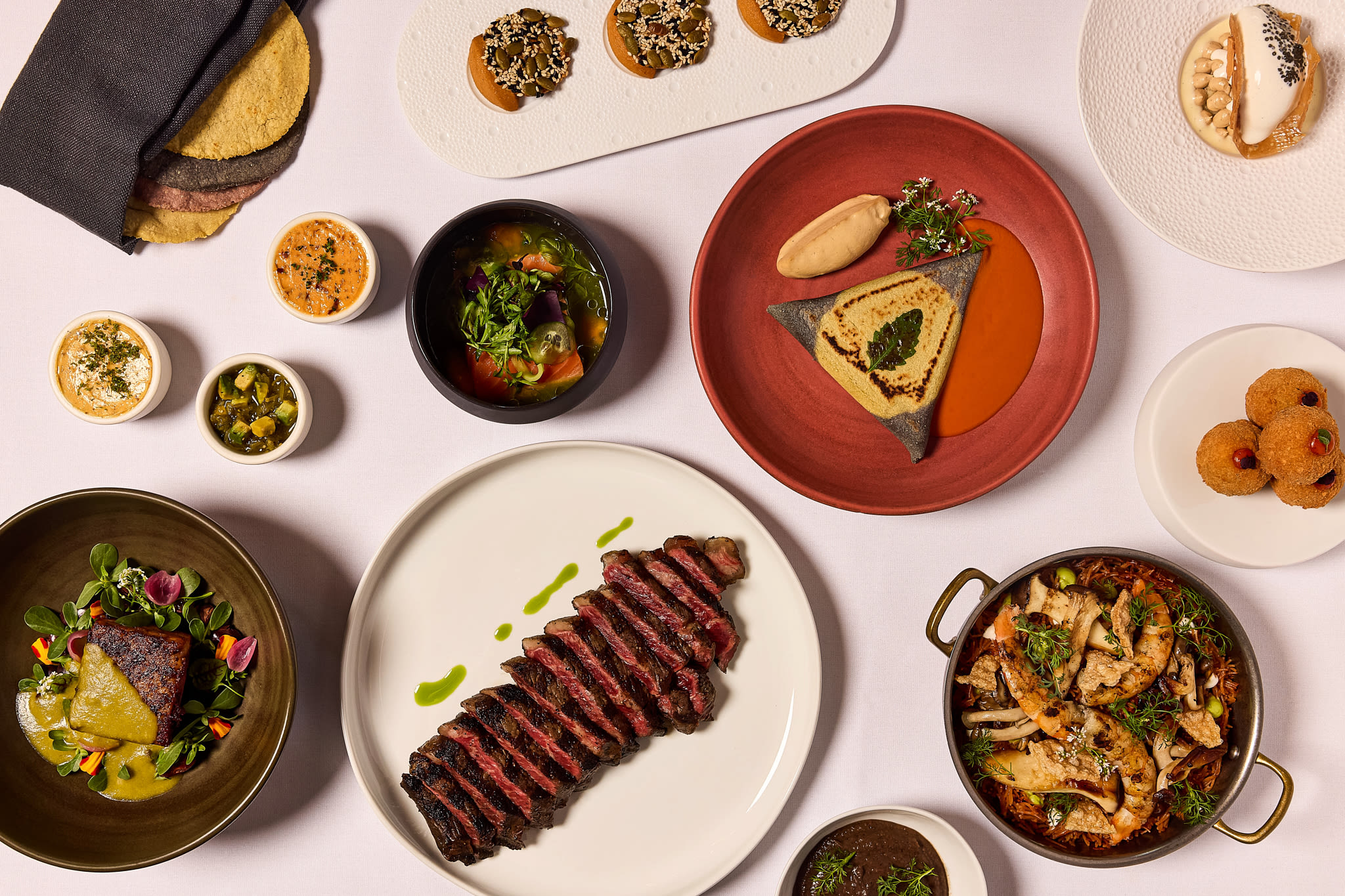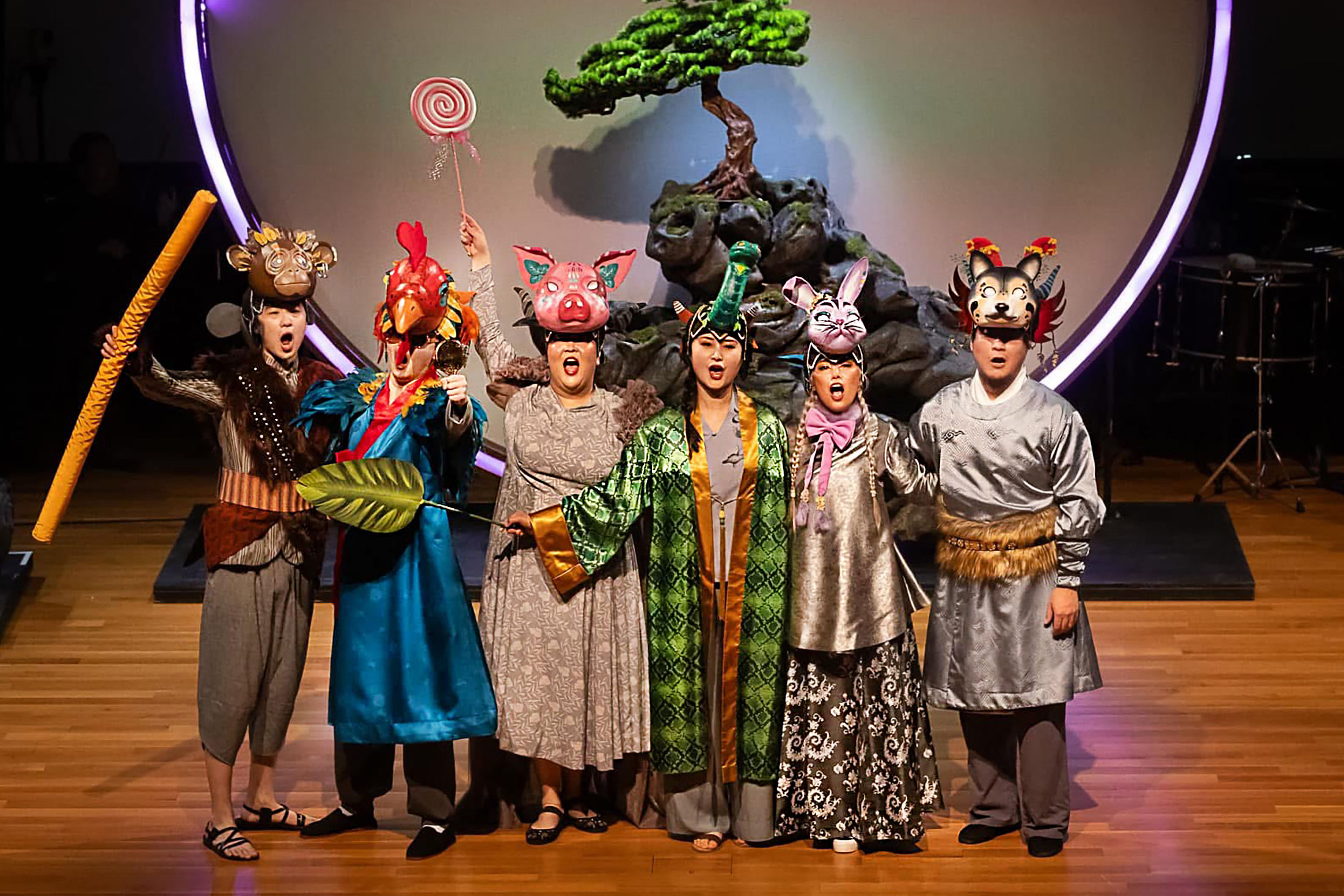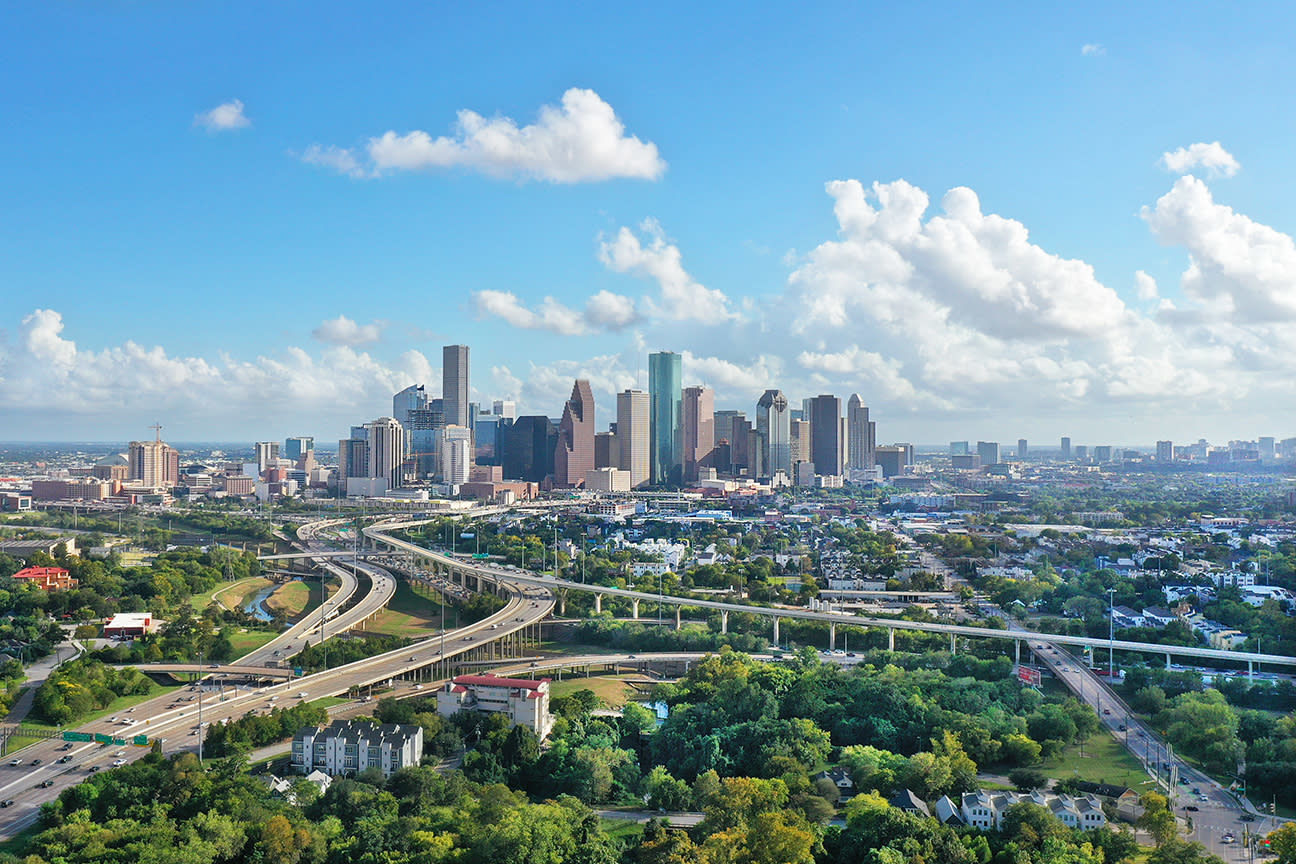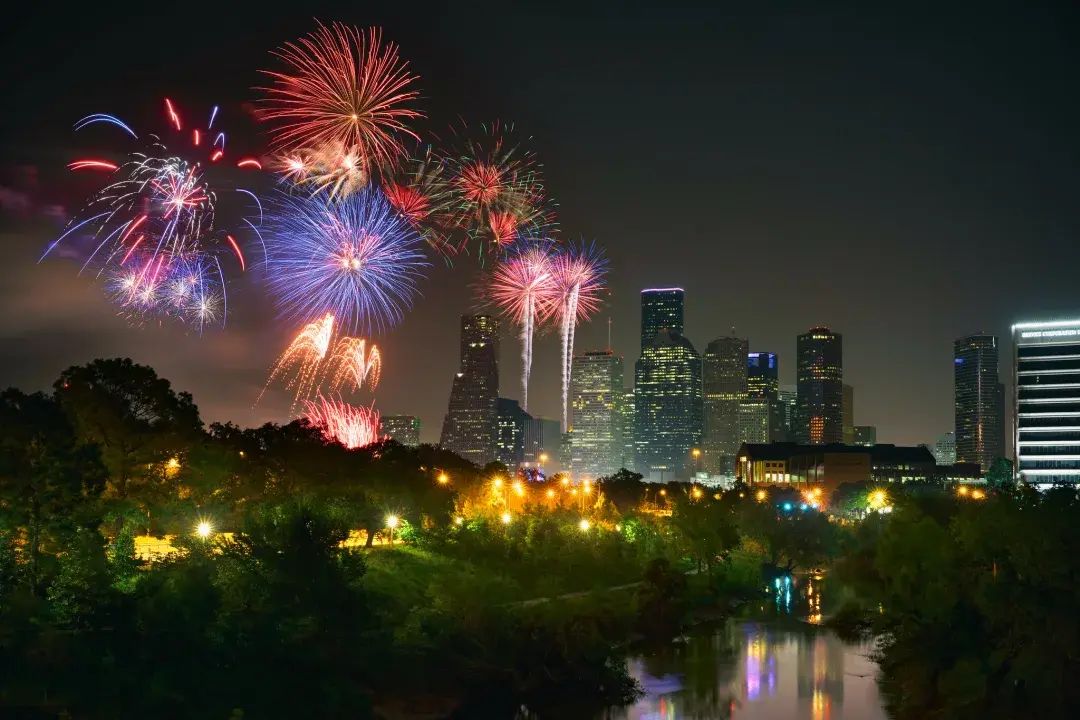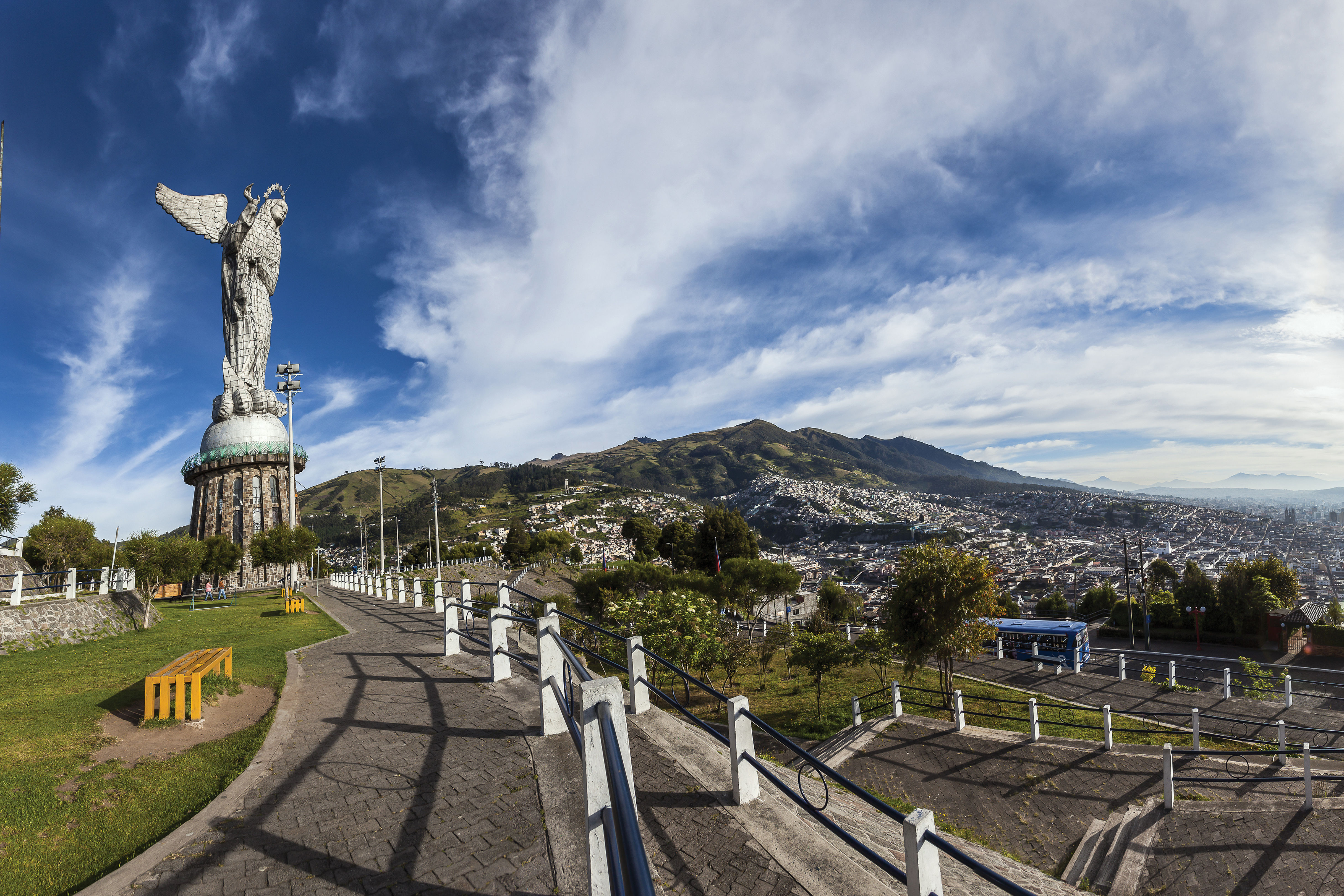
Floating Away in Quito, the City of Clouds
It’s past midnight when we land on the other side of the equator. The time zone hasn’t changed; only the hemisphere. Quito’s airport is only four years old, still sparkling new, its glass and steel terminals lit up with neon colors at night, the only thing we can see, because we’ve landed 45 minutes outside of the capital city itself and dense fog—as usual—blankets the roads and the mountains, which we won't see until the morning.
We meet Mauro, our driver, on the other side of customs. He’s a friend of our Airbnb host, who arranged for transportation into the city for us during the dead of night. A hotel stay here can be surprisingly expensive for a country where everything else is marvelously inexpensive; Airbnbs fall into that latter category. (Even better? The currency here is the U.S. dollar, which means no exchange rates.)
My best friend Hala and I have rented a beautifully appointed three-bedroom apartment in the heart of the city for $88 a night. Its owner is a retired American who, with her husband, lives in a town called Mindo, two hours away, where they run an organic farm in the cloud forest, as the area is called. She gives me the farm’s Instagram handle; it looks like Eden. But they keep the city apartment where we’re staying for five nights, too.
Soon Mauro is whipping through the clouds that have settled on the hairpin roads that carve their way down into the valley where Quito lies, chatting about the llapingachos (cheesy potato cakes) and salchipapas (fries topped with chopped-up hot dogs and ketchup) we must try while we’re here. We can’t understand how he can even see where he’s going, but he’s relaxed enough to make street-food recommendations, and his mood is contagious. We too relax into the breakneck turns, feeling a little thrill every time a cloud breaks and we briefly see the lights of the city ahead.
You shouldn’t try to rent a car in Ecuador; you are not nimble or practiced enough for the driving conditions, the congestion, the loose interpretation of traffic signals and lane dividers. And anyway, in a metropolis like Quito where 2.7 million people make their home, it makes as much sense as renting a car in New York City—which, as it turns out, is very close to what Quito looks like by daylight.
The next morning, we gasp as we round a corner from our apartment down a hill toward Avenida América. Beyond the seven-lane thoroughfare sprawls a dense, colorful city packed with tall buildings that would seem even taller were they not dwarfed by the Andes Mountains beyond. In the far distance, the snow-capped Pichincha—an active volcano whose last major eruption, in 1999, covered the city with a layer of ash—looms like the home of an ancient god. The largest neo-Gothic basilica in the Americas, Basílica del Voto Nacional, is the only structure that comes close to competing with the natural landscape, its twin spires jutting into the sky like two jagged Andean peaks.
As we walk the avenue, we see women selling fresh red crabs from deep blue buckets, next to a Colombian bakery where old men are laughing loudly at a curbside table, while diesel buses puff along, about one for every ten taxi cabs. Stick your hand out, and you’ve got a cab in, well, a New York minute. I can’t help thinking that long, skinny, built-up and crammed-in Quito feels like what would happen if you dropped Manhattan from the sky into the middle of the mountains.
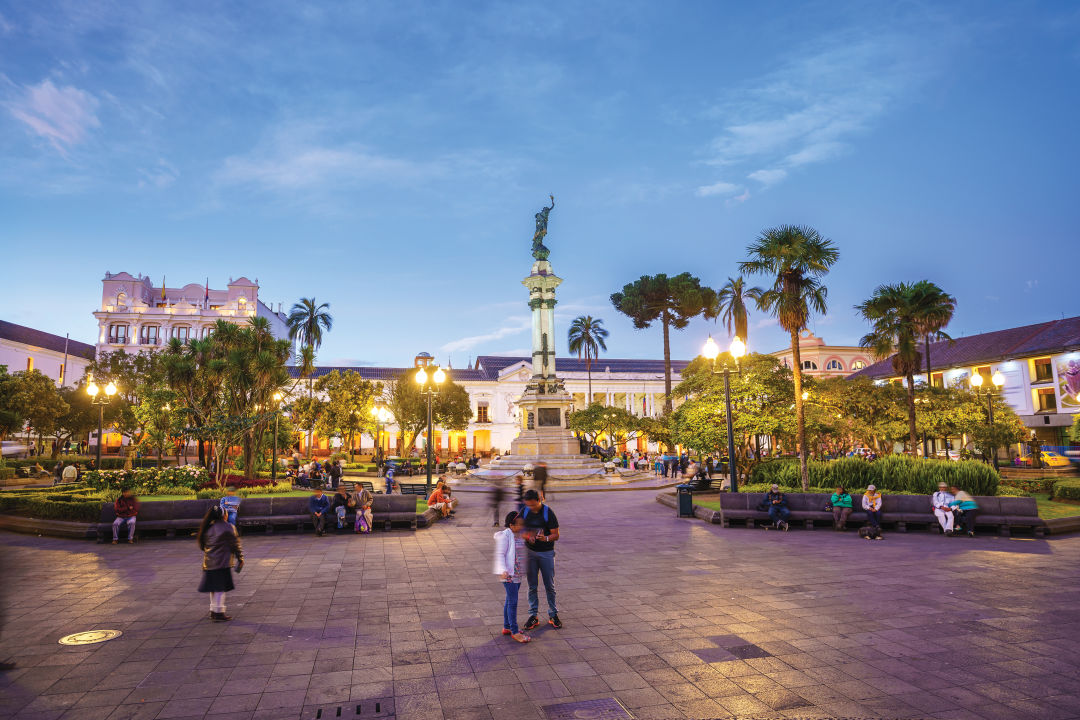
Plaza Grande in the Centro Historico at dusk
Image: Shutterstock
On a Saturday morning, Hala and I stroll through the city to brunch. In the huge Parque La Carolina, we pass a farmers market with live music, a Zona de Crossfit that proves the fitness trend is inescapable, and a grand botanical garden. We land at a German bakery where the table next to us chats away in Japanese as we munch on “Janky” (see: Yankee) waffles and bacon and gulp down dark, delicious blackberry juice and Ecuadorian coffee.
“I didn’t expect this city to be so international,” Hala remarks, not for the first time. (The final time will be some nights later in a sushi restaurant, where I enjoy fresh eel while she carries on in Arabic with some diplomats from Qatar and a local Instagram celebrity originally from Tunisia.)
Afterward, we catch a cab up a steep hill and join a tour of Oswaldo Guayasamín’s home and museum, La Capilla del Hombre, finished in 2002. Ecuador’s most beloved artist painted both large-scale works of heart-breaking human suffering and intimately realized portraits of global figures (Fidel Castro sat for him multiple times). We tour the place with a group of Germans, a French couple and some Brits, all of us seemingly moved beyond the need for language by the painter’s haunting visages. Outside, a deck affords a stunning view of the city beyond, jumbles of apartments seeming to tumble down slopes, a stark comparison to the solemn, grey angularity of the museum itself.
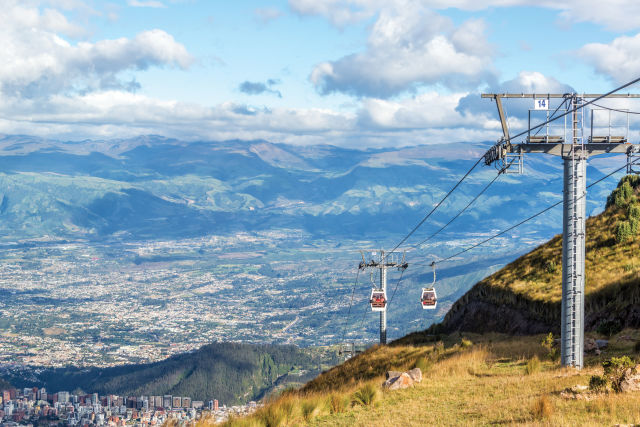
Image: Shutterstock
Quito is a city that upends expectations and offers fascinating contrasts: It’s a few miles south of the equator, yes, but it’s also 9,350 feet high, so it’s cool here year-round, with crisp, thin mountain air. Centuries-old cathedrals and cozy 1950s-era cafeterías coexist alongside hip, open-air food truck parks and post-modern high-rises out of The Jetsons. All of this, in a small country with an outsized global reach, thanks to its petroleum exports and fruitful trade agreements with countries like India and China.
On a bad day, diesel fumes attest to Quito’s reliance on the oil and gas industry, yet Ecuador itself became the first country in the world to recognize the rights of nature when it rewrote its constitution in 2008. “Nature or Pachamama,” the new constitution reads, “has the right to exist, persist, maintain and regenerate its vital cycles, structure, functions and its processes in evolution.”
We see that nature up-close-and-personal on a day trip to Papallacta, a spa town an hour outside Quito. Iván, our driver, takes the turns up into the mountains even more wildly than Mauro did; I pop a Dramamine and gaze into the distance at shaggy-haired cows climbing nearly vertical pastures as sure-footedly as goats. Once we arrive, our tour guides take us on a hike, following a glacial-fed stream past flowering angel’s trumpet bushes and succulents shaped like giant green roses, everything surrounded by abundantly verdant mountains.
For lunch, we enjoy salads of lettuce, shallots and tomatoes pulled from the organic garden outside, topped with rainbow trout fresh from nearby Lake Papallacta, and chat with our fellow tour-takers. There’s a 24-year-old Canadian accountant on vacation (“Houston’s where country music comes from, right?”), as well as a native Quiteño who’s just lost her job as a newspaper reporter, here to revisit a happy childhood memory: a holiday spa weekend with her parents. “I’m ready to leave Quito,” she confesses. “It’s too busy. I want to move to Cuenca, where the pace is slower.”
After a four-hour soak in the spa’s volcanically heated, magnesium-rich mineral waters and a steam in a sauna filled with the warm, slightly camphoraceous scent of coca leaves, I am terribly relaxed. But I am ready to get back to Quito’s busy pace, its infectious energy.
Back in town and heading out for dinner, we notice the clouds are tumbling quickly over the mountains, into the streets of the city. “That cloud looks like it’s walking!” Hala exclaims. I always thought T.S. Eliot’s anthropomorphized description of fog in “The Love Song of J. Alfred Prufrock” was a little affected. But now that I’ve seen a cloud creep along a street like an animal, I’m regretting everything I wrote in that 12th grade English lit class.
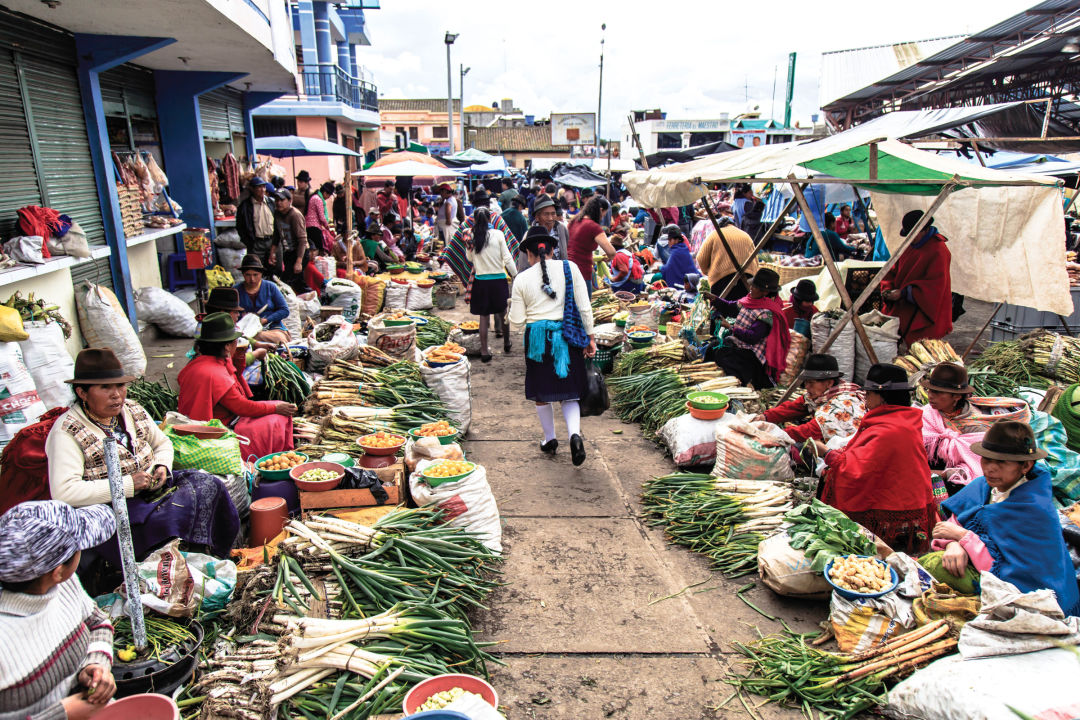
Street vendors are found in abdundance.
Image: Shutterstock
The next day I think of something the Canadian said in parting: She is here for a month, but “that’s not enough time to see everything in Ecuador.” She wishes she’d left more time for Quito, in particular. Many tourists fly into the city and use it as a jumping-off point for visiting ancient Cuenca to the south, or the Galápagos Islands off the coast to the west, or the Amazon jungle to the east, not realizing the distinct pleasures Quito itself holds.
The city’s proudest asset is its Centro Histórico, the oldest part of the city, and (along with Krakow, Poland) the very first UNESCO World Heritage Site, designated in 1978. Here, it’s possible to imagine yourself in 16th-century Spain—so long as you’re looking up at the marvelously unmodified architecture. Look ahead, and the narrow cobblestone streets teem with modern humanity: kids in soccer jerseys on cellphones, chocolatiers selling trendy passionfruit-filled truffles, women visiting tiny boutiques, tourists from every corner of the world snapping selfies.
In a sidewalk cafe overlooking a 413-year-old monastery, we take it all in while finishing our goat stew and mashed plantains between sips of mate de coca, tea brewed from coca leaves that helps combat the altitude sickness often felt by those of us born and raised at sea level. Afterward, we spend hours gawking at the intricately detailed dioramas inside the Museo de la Ciudad, devoted to the city’s thousands of bloody years of history, from the Incas to the conquistadores to the rise and fall of Simón Bolivar.
We head inside the monastery after, but are most impressed with a church we visit next, down the block: La Iglesia de la Compañía de Jesús is the most ornately decorated church I’ve ever seen, its inner sanctuary glittering like some temple out of Oz. Every column, every nook, every dome is covered in gold leaf. It looks laughably unrealistic in photos, but in person it’s like standing before the very throne of heaven.
That night, we splurge on a tasting menu that’s every bit as indulgent as all those layers of gold leaf: 13 courses, with beverage pairings. Inside a mock Ecuadorian passport is a hand-written menu, and our server explains in impeccable English that it’s meant to take us on a historic and geographic tour of her country. We happily submit to this gastronomic undertaking for three hours, emerging as educated about the variety of potatoes in Ecuador (more than 4,000) as we had been about the Battle of Pichincha earlier that day, when one of our taxi drivers took it upon himself to give us a guided tour of El Panecillo: a hill overlooking the city upon which stands a 148-foot winged statue of the Virgin Mary.
“That’s where the famous battle took place,” Juan Carlos told us, pointing to another hill in the distance upon which a decisive battle against Spain had taken place during Ecuador’s war for independence in 1822. “Pew! Pew!” he said with a grin over a pair of finger guns. “You’re really kind to tell us all this,” I told him. “It’s in the heart of every Ecuadorian to share,” he said. “We’re a small country, but proud.”
The next evening, before we can even believe our trip is over, before we’ve even remembered to visit La Mitad del Mundo—the actual equator just outside of the city, whose allure has been quickly eclipsed by the charms of Quito itself—we’re back in Mauro’s SUV, whipping around cloud-clogged mountain roads back up to the airport.
“Next time,” he says, “you’ll have to come visit Mindo.” Not only does our Airbnb host have a farm there, Mauro explains; his whole family is from the cloud forest. Clouds like these are in his blood.
We can’t see Quito at all as we drive through the fog-filled night. It’s like we’re not even saying goodbye.
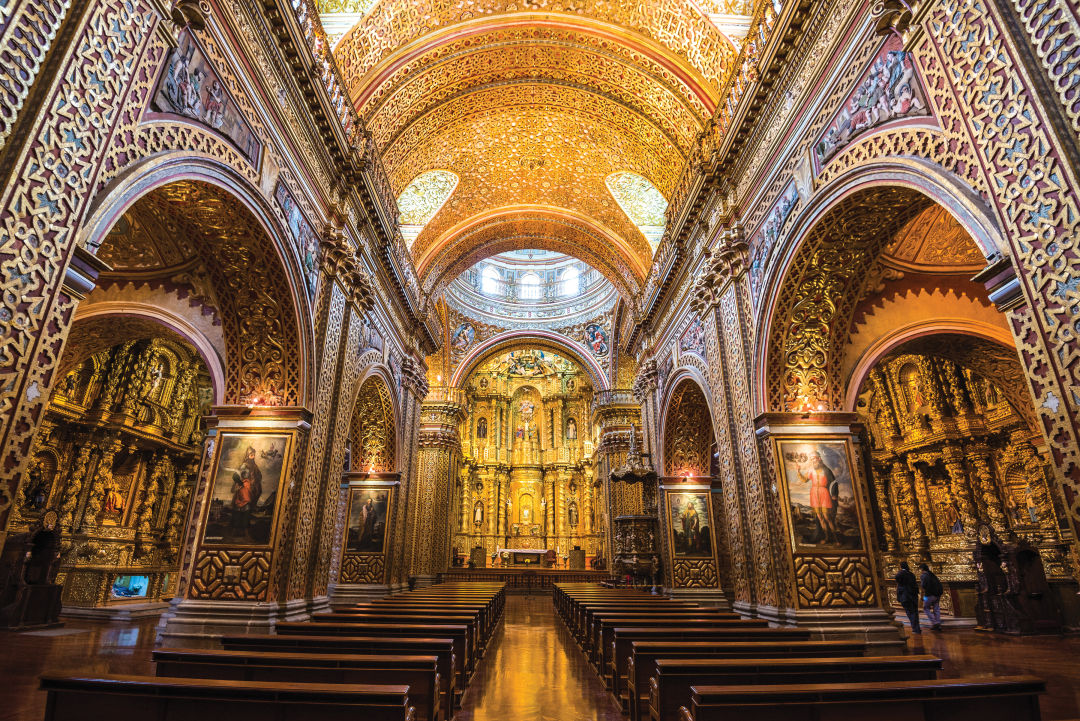
La Iglesia de la Compañía de Jesús
Image: Shutterstock
Traveler's Tips
How to Get There
Quito is a roughly five-hour non-stop flight from IAH on United. Round-trip fares start at $565.
Where to Stay
Cheap and cheerful hostels can be had for $10/night. Airbnb homes are a better deal, allowing you a more luxurious and immersive experience for $40–$90/night.
How to Get By
- Public transit is abundant and cheap; bring quarters if you’re going to use the bus.
- Taxis are $2–$4 to most places in the city and easily obtained. You can also download the EasyTaxi app that’s like Uber for Ecuador’s yellow taxis.
- Spanish is spoken slowly and clearly in Ecuador. Although most people speak enough English for a short conversation, Quito is an ideal place for polishing up those Spanish skills.
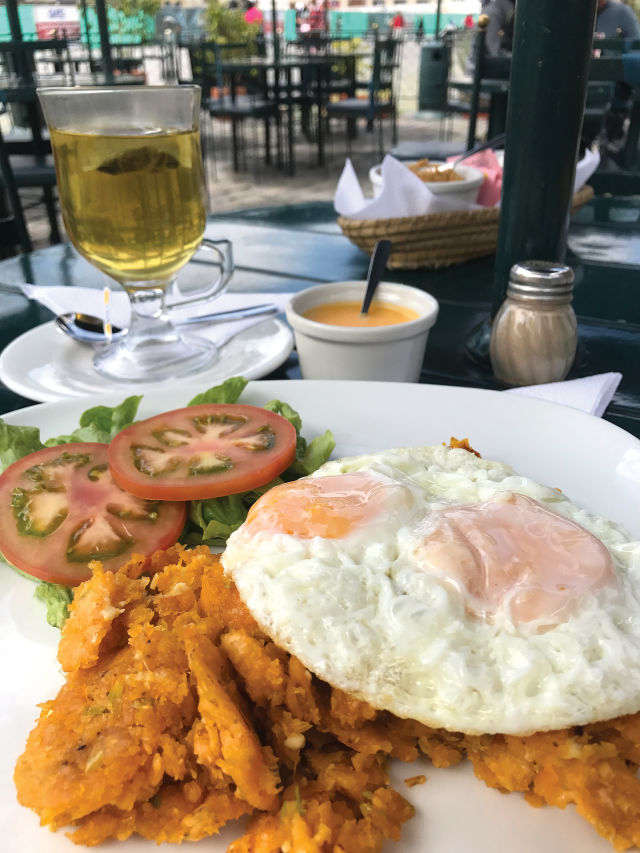
Breakfast at Tianguez
Image: Katharine Shilcutt
Where to Eat
- URKO Cocinca Local, where a 13-course tasting menu runs a mere $75.
- Jürgen Café, where an extravagant, multi-course brunch can be had for $12.
- La Pradera Food Garden, where cool kids congregate to eat modern street food and drink craft beer out of kitchens built into corrugated metal shipping containers; bring $10 to pig out. +593-099-804-4539
- Tianguez, where traditional Quiteño meals are served for $7 on the historic Plaza de San Francisco.
- Rincón Manabita, where Manabi-style ceviches and cazuelas can be enjoyed on a sunny patio for $9. +593-002-246-3664
What to Do
- Quito Tour Bus, which runs a variety of bus tours in town, also offers day trips such as those to Papallacta for $60, all-inclusive.
- Museo de la Ciudad, housed in the former city hospital, operated for 409 years before reopening as a museum in 1998; tickets are $3.
- Fundación Guayasamín, the former home/museum of Ecuador’s most famous painter, Oswaldo Guayasamín, is a must; tickets are $8.
- TelefériQo will take you, via gondola, to an overlook 13,000 feet high, where you can rent bikes or horses to continue exploring Quito’s mountains; tickets are $8.50.



